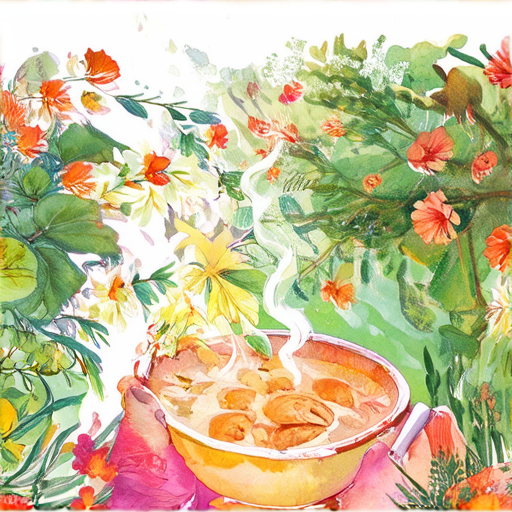Developing a refined palate requires more than just a keen sense of smell and taste – it demands a deep understanding of food tasting techniques, which involve a combination of sensory evaluation, cultural knowledge, and scientific principles. Whether you’re a seasoned chef, a curious foodie, or simply someone who appreciates the art of fine dining, mastering these techniques can elevate your culinary experiences and open up new possibilities for exploration. By learning how to professionally taste food, you’ll gain a deeper appreciation for the nuances of flavor, texture, and aroma, allowing you to navigate even the most complex dishes with confidence.

Tasting Food Professionally
To taste food professionally, it’s essential to understand how our senses work together to perceive flavors.
- Smell: Our sense of smell plays a significant role in tasting food. Before taking a bite, take a moment to appreciate the aroma of the dish. This will help awaken your taste buds and prepare your palate for the flavors to come.
- Chewing: Chew slowly and thoroughly, allowing the food to mix with saliva and release its flavors. Move the food around in your mouth to hit all the taste receptors.
- Neutralizing: Between samples, neutralize your sense of smell by eating a small bite of an unsalted soda cracker, rinsing with water, or smelling the inside of your elbow.
- Palate Cleansing: Cleanse your palate between bites by drinking a small amount of water or eating a neutral-tasting food like crackers or bread.
- Focus: Pay attention to the flavors, textures, and temperatures of the food. Take note of the balance of sweet, sour, salty, and umami flavors.
- Record: Record your observations and notes to track your progress and identify areas for improvement.
Best Practices for Tasting Food Professionally
- Use high-quality ingredients to ensure optimal flavor and texture.
- Pay attention to presentation and plating to enhance the overall dining experience.
- Experiment with different cooking techniques and flavor combinations to develop your unique style.
- Practice regularly to hone your senses and develop your palate.
- Stay curious and keep learning about different cuisines, ingredients, and cooking methods.
Additional Tips for Professional Tasters
- Develop a consistent routine for tasting food, including regular breaks and palate cleansers.
- Use descriptive language to record your observations and notes.
- Consider working with a mentor or experienced taster to learn from their expertise.
- Stay hydrated and eat nutritious foods to maintain your physical and mental well-being.
- Continuously update your knowledge and skills to stay ahead in the industry.
Recommended Resources
Conclusion
Tasting food professionally requires dedication, practice, and a willingness to continuously learn and improve. By following these guidelines and staying committed to your craft, you’ll become a skilled professional taster and elevate your career in the culinary industry.
The Art of Proper Food Tasting
At Memories restaurant, we believe that savoring each bite is just as important as cooking it.
- Step 1: Sniff and Engage Your Senses
- Step 2: Taste with Clarity
- Step 3: Balance Flavors and Textures
- Step 4: Pair with Purpose
- Step 5: Share and Enjoy
Before taking a bite, take a moment to appreciate the aroma of your meal. Hold your fork or spoon close to your nose and inhale deeply, allowing the scents to transport you to a world of flavors.
When you’re ready to take a bite, try to eat slowly and mindfully. Chew thoroughly, paying attention to the textures and temperatures of each ingredient. This will help you fully appreciate the complexity of your dish.
A great meal is all about balance – sweet, salty, sour, and umami flavors working harmoniously together. Pay attention to how each component contributes to the overall taste experience.
Just as wine pairing can elevate a meal, so too can thoughtful beverage choices. Experiment with different drinks to find the perfect complement to your cuisine.
Food is meant to be shared with others! Invite friends and family to join you in exploring new flavors and making memories around the table.
By incorporating these steps into your dining routine, you’ll become a master chef of sorts, capable of unlocking the full potential of each delicious bite.
For more culinary inspiration and expert advice, visit our recipe library or explore the world of flavors on our blog.
At Memories restaurant, we’re passionate about helping you discover the joy of food and the art of proper tasting. Join us on this culinary journey and let’s savor the flavors together!

Tasting Methods
We understand the importance of proper food handling and safety procedures, which is why we’re sharing our expertise on the methods of tasting.
- Transfer Method: One way to taste test food is by transferring a small amount onto a separate plate or utensil, allowing you to sample the food without contaminating the original batch.
- Spoon Method: Another method involves using a clean spoon to scoop out a small portion of the food, making it easy to taste without compromising the integrity of the dish.
Why Proper Tasting Methods Matter
At Memories Restaurant, we take pride in serving high-quality dishes that meet the highest standards of food safety and quality control. By following proper tasting methods, we ensure that our customers receive the best possible dining experience.
- Prevents Cross-Contamination: Using separate plates or utensils helps prevent cross-contamination between foods, reducing the risk of foodborne illnesses.
- Ensures Food Quality: By sampling food in a controlled environment, we can accurately assess its texture, flavor, and overall quality before serving it to our customers.
Best Practices for Tasting
To maintain the highest level of food safety and quality control, we recommend the following best practices for tasting:
- Use Clean Utensils: Always use clean and sanitized utensils when tasting food to prevent cross-contamination.
- Sample Small Amounts: Taste small amounts of food to avoid overwhelming your senses and to ensure accuracy in your assessment.
- Record Your Findings: Keep a record of your tasting notes to track changes in food quality and identify areas for improvement.
By following these simple yet effective methods, you’ll be able to taste and evaluate food with confidence, ensuring a safe and enjoyable dining experience for yourself and others.

The Diverse World of Taste
Taste buds play a crucial role in determining the five basic tastes: sweet, sour, salty, bitter, and umami.
- Sweetness is often associated with sugars and fruits, while sourness is commonly found in citrus fruits and vinegar.
- Saltiness is typically linked to table salt and savory foods, whereas bitterness is often detected in dark chocolate and coffee.
- Umami, often referred to as the fifth taste, is characterized by a savory or meaty flavor, commonly found in foods high in glutamates like mushrooms and soy sauce.
Flavor Profiles and Aromas
Aromas play a significant role in shaping our perception of flavor, as they interact with taste buds to create complex flavor profiles.
- Foods with strong aromas, such as freshly baked bread or roasted coffee, can evoke powerful sensory experiences.
- Certain ingredients, like herbs and spices, contribute to the aromatic properties of dishes, adding depth and complexity to flavors.
- The combination of aromas and tastes creates a unique flavor profile, making each culinary experience distinct and memorable.
Exploring the Art of Flavor Balance
Understanding how different flavors balance and counterbalance one another is essential for creating harmonious and appealing dishes.
- Contrasting flavors, such as sweet and sour or spicy and cool, can create interesting and refreshing combinations.
- Similar flavors, like herbal notes in various teas, can evoke a sense of familiarity and comfort.
- Experimenting with different flavor combinations allows chefs and home cooks to develop their own unique styles and preferences.
Unlocking the Secrets of Flavor
By exploring the world of taste and aroma, we can unlock the secrets of flavor and create truly exceptional culinary experiences.
- Discovering new ingredients and flavor combinations can inspire creativity and innovation in the kitchen.
- Understanding the science behind taste and aroma can help us appreciate the complexity of flavors and aromas.
- Sharing knowledge and passion for flavor can bring people together, fostering a deeper appreciation for the art of cuisine.
Navigating the World of Flavors
With its vast array of flavors and aromas, the culinary world offers endless possibilities for exploration and discovery.
- From classic comfort foods to exotic international cuisines, there’s always something new to try and explore.
- Embracing diversity and experimentation can lead to exciting discoveries and a deeper understanding of the complexities of flavor.
- Whether you’re a seasoned chef or a curious home cook, navigating the world of flavors can be a lifelong journey of learning and growth.
Understanding the Five Basic Qualities We Can Taste
The human experience of tasting food involves the interaction of all five senses, and our ability to distinguish between different flavors is crucial for nutrition and overall well-being.
- Sweet: A sweet taste is often associated with sugars and other carbohydrates, which provide energy for the body. Sweetness is detected by specialized taste receptors on the tongue called T1R2/T1R3.
- Sour: Sour tastes are typically caused by acids, such as citric acid found in citrus fruits. These acids stimulate the TPC2 receptors on the tongue, sending signals to the brain that indicate a sour taste.
- Bitter: Bitter tastes are usually associated with compounds that have a toxic or unpleasant effect on the body. Bitterness is detected by T2R receptors on the tongue, which respond to a wide range of bitter molecules.
- Salty: Salty tastes are primarily caused by sodium chloride, commonly known as table salt. Salt stimulates the ENaC receptors on the tongue, triggering a response that indicates a salty taste.
- Umami: Umami is often referred to as the fifth basic taste, and it is characterized by a savory or meaty flavor. Umami is detected by T1R1/T1R3 receptors on the tongue, which respond to glutamates and other amino acids.
These five basic tastes work together to create the complex flavors we experience when eating food. By understanding how these tastes interact, we can better appreciate the nuances of different cuisines and develop a deeper appreciation for the art of cooking.
At Memories Restaurant, we believe that the art of cooking is not just about following a recipe, but about understanding the science behind the flavors we create. Our chefs are dedicated to crafting dishes that showcase the beauty of each ingredient and the harmony of the five basic tastes.

The Seven Types of Tastes
As a food enthusiast, I’m excited to share with you the fascinating world of flavors and the seven types of tastes that make our culinary experiences truly unforgettable.
- Salt: Enhances flavors and textures, adding depth and complexity to dishes.
- Sweet: Adds a touch of warmth and comfort, balancing out savory flavors.
- Sour: Provides a refreshing contrast, cutting through richness and acidity.
- Bitter: Adds a sophisticated nuance, balancing out sweetness and acidity.
- Umami: The fifth basic taste, often associated with savory, meaty, or brothy flavors.
- Fat: Contributes to texture and mouthfeel, adding richness and creaminess to dishes.
- Spicy: Adds a thrilling kick, releasing endorphins and invigorating the senses.
These seven types of tastes work harmoniously together to create a symphony of flavors that delight our taste buds and leave us craving for more.
Exploring the World of Flavors
At Memories Restaurant, we’re passionate about exploring the diverse world of flavors and sharing our discoveries with you.
- We source high-quality ingredients from local farmers and suppliers to bring you the freshest flavors possible.
- We experiment with innovative cooking techniques and recipes to push the boundaries of culinary creativity.
- We collaborate with fellow food enthusiasts and chefs to share knowledge and inspiration.
Celebrating the Art of Cooking
Cooking is an art form that requires patience, passion, and practice. At Memories Restaurant, we celebrate the art of cooking and invite you to join us on this delicious journey.
Whether you’re a seasoned chef or a curious cook, we welcome you to explore our kitchen and discover the magic of flavors.

0 Comments